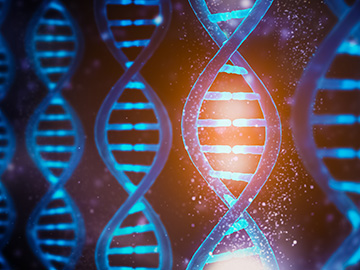
[Image: Getty Images]
While everyone knows that DNA looks like two strands wrapped around each other in a double helix, biologists realize that the molecule’s twist can get much more complex. The genetic molecule can twist and coil itself up in all sorts of ways while carrying out its fundamental work of transcription, replication and recombination.
Understanding the elasticity and resistance to torsion would lead to greater insight into these vital processes, but direct measurements of this twist resistance have been a challenge to realize. Now a team at a U.S. university has used an angular optical trap to make direct torque measurements while DNA is positioned in a so-called supercoil (Phys. Rev. Lett., 10.1103/PhysRevLett.127.028101).
Molecular mechanics
Scientists have been trying to measure the torsional stiffness of DNA for several decades, but for many years their indirect methods relied on models filled with assumptions, rather than direct measurements.
Michelle Wang and her colleagues at Cornell University, USA, have been using optical traps and magnetic tweezers to study the dynamics of DNA and related RNA and protein molecules. In 2007 she and her group developed an optical torque wrench, in which a nanofabricated quartz cylinder attached to one end of a DNA chain twisted back and forth in the path of a trapping laser beam under the application of an external force. After passing through the cylinder, the beam experiences a change in angular momentum, which leads to a direct determination of the torque on the molecule.
For this set of experiments, Wang, Cornell postdoctoral fellow Xiang Gao and their team members tackled more mathematically complicated tangles of DNA called supercoils. In another change, instead of holding the DNA strands under constant tension as in previous work, the researchers kept the molecule at a constant extension and varied the amount of force applied to the setup inside the optical trap. Because the team could measure the extension with less error than the applied force, the group could improve their torque data as well.
Gao, Wang and their associates measured two DNA topologies’ “twist persistence length,” a metric of torsional stiffness, at 22 to 24 nm under 20 fN of tension. (This force measurement was an order of magnitude lower than in previous studies of DNA twist.) The researchers hope that their work leads to better understanding of DNA molecular mechanics.
